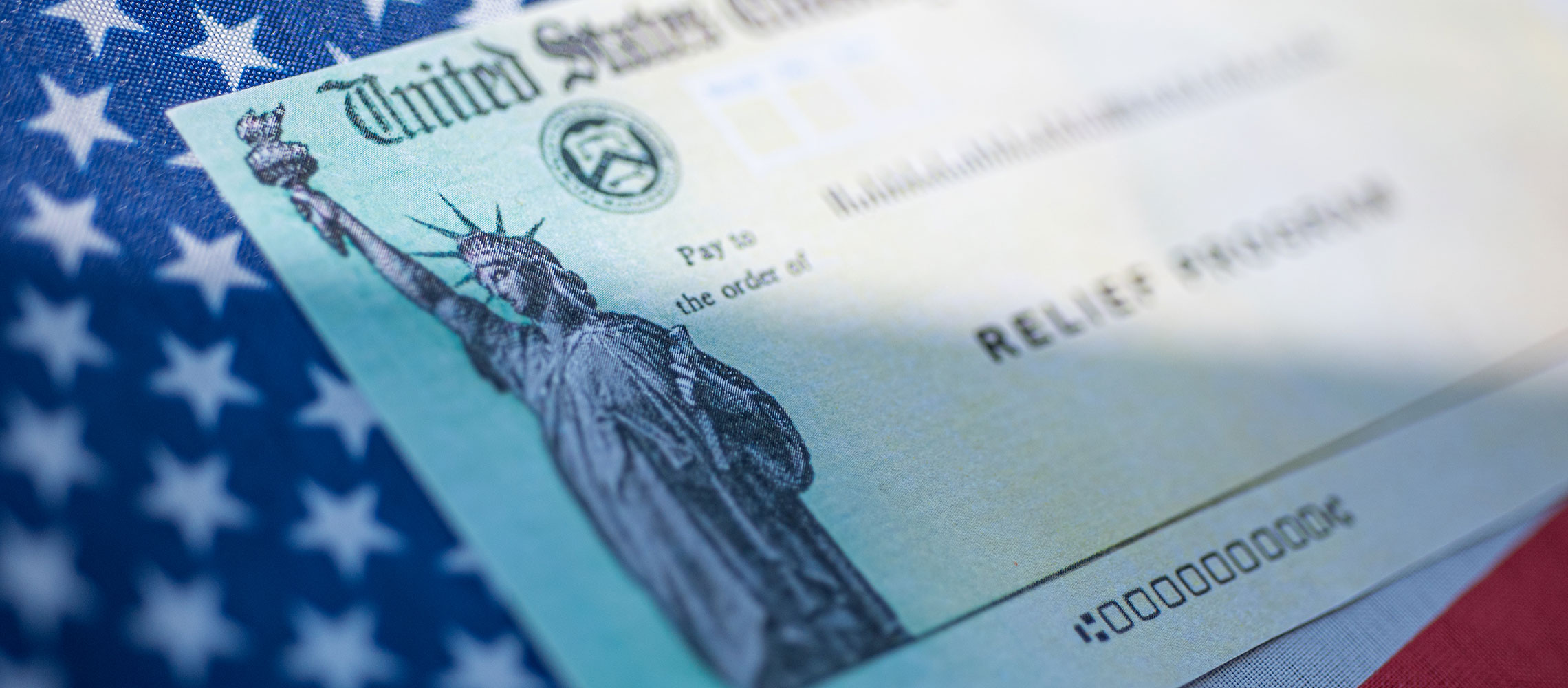What to Know about the New Economic Impact Payments
Reading time: 4 Minutes
March 17th, 2021
A third round of Economic Impact Payments (EIP) is going out to millions of qualifying individuals. The payments, which are part of the $1.9 trillion American Rescue Plan signed into law by President Joe Biden on March 11, 2021, will generally be up to $1,400 for eligible individuals, this time including adult dependents.
It’s the largest EIP amount yet, although the income cutoff limits are stricter this time, meaning that many people who received money from the first and second rounds of funding may not be eligible this time around.
Want to know whether you're receiving a check, and when to expect it? Here’s what you need to know about this most recent round of economic impact payments:
You can check the status of your payment via the IRS Get My Payment Tool.
The IRS has reopened Get My Payment tool on IRS.gov for this third round of EIP funding. This website is the only place to check the status of your payment. Using the tool, you’re able to find the current status of your third payment, even if you don’t normally file taxes. Your financial institution will not have access to your payment status or eligibility.
Most people don't need to do anything to receive payment.
Distribution of this third round of economic impact payments has already started, and no action is required for most people. The IRS will calculate and automatically distribute payments, either directly deposited into the same bank account where you receive your tax refunds or in the form of a paper check or debit card that will arrive by mail. Some U.S. residents may see a pending direct deposit payment or a provisional payment in their bank accounts before their official payment date. Most banks will process that payment on the effective date, which is the date the IRS actually transmits the funds to the bank. This ensures that, if the IRS somehow makes a mistake, you aren’t having money deposited early and then taken away at a later date.
If your mailing address has recently changed or you have questions about your EIP situation, check the IRS FAQ page for more information.
Your EIP amount is based on your income, dependents and marital status.
Much like the other economic impact payments, the amount a person receives is based on several factors.
- Eligible recipients with an adjusted gross income (AGI) of $75,000 or less will receive $1,400. Individuals who make more than $75,000 will receive a reduced amount, $28 less per every $100 over the income threshold.
- Those making more than $80,000 will not be eligible for checks at all.
- Recipients eligible for a $1,400 payment will also get an additional $1,400 for each dependent, including adult dependents.
- Heads of household making $112,500 or below will get the full payment. Those making more than $120,000 will not qualify.
- Married couples who collectively make $150,000 or below are each eligible for a $1,400 payment. Married couples making more than $160,000 collectively will not be eligible.
Your adjusted gross income is based on the most recent tax returns submitted to the IRS.
The IRS will be basing its EIP eligibility on the most recent income tax information it has on file for you. Depending on whether you’ve filed your 2020 income tax return yet, that may be either 2020 income or 2019 income.
If your income dropped in 2020, and you haven’t already filed your 2020 return, you may be eligible for a larger EIP amount than the IRS is aware of. Even if the IRS underpays your EIP based on outdated information, you should be able to claim the remaining amount when you file your taxes by claiming a Recovery Rebate Credit.
You’ll receive a notification after funds have been deposited.
Economic impact payments will be directly deposited into the bank account listed on your 2019 or 2020 tax returns. If no account is listed, the IRS will mail a paper check or prepaid debit card to the most recent address they have for you on file. By law, the U.S. Treasury must also mail a notice of payment to your last known physical address.
Your payment isn’t affected by tax debt.
Like the last two rounds of stimulus packages, economic impact payments will not be seized to pay tax debt. The federal government can take your annual tax refund and apply it toward any money owed to the IRS, but will not do so with an economic impact payment. The only instances where an economic impact payment might be affected is if you owe others money under a garnishment or other court order (including child support), or if you’re currently overdrawn with the bank receiving your direct deposit.
This material has been prepared for informational purposes only, and is not intended to provide, and should not be relied on for, tax or investment advice. Consultation with a legal, tax or accounting advisor is advised.
You're about to exit BOH.com
Links to other sites are provided as a service to you by Bank of Hawaii. These other sites are neither owned nor maintained by Bank of Hawaii. Bank of Hawaii shall not be responsible for the content and/or accuracy of any information contained in these other sites or for the personal or credit card information you provide to these sites.
